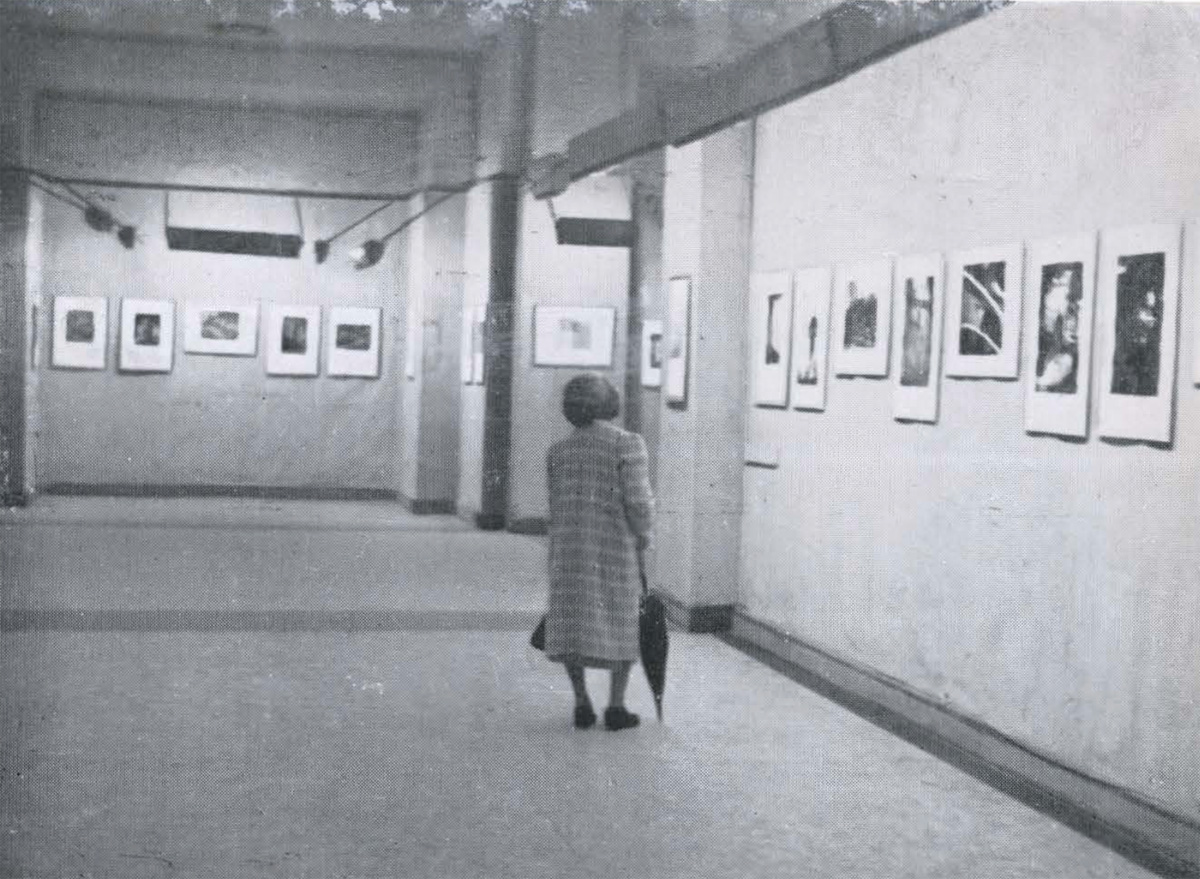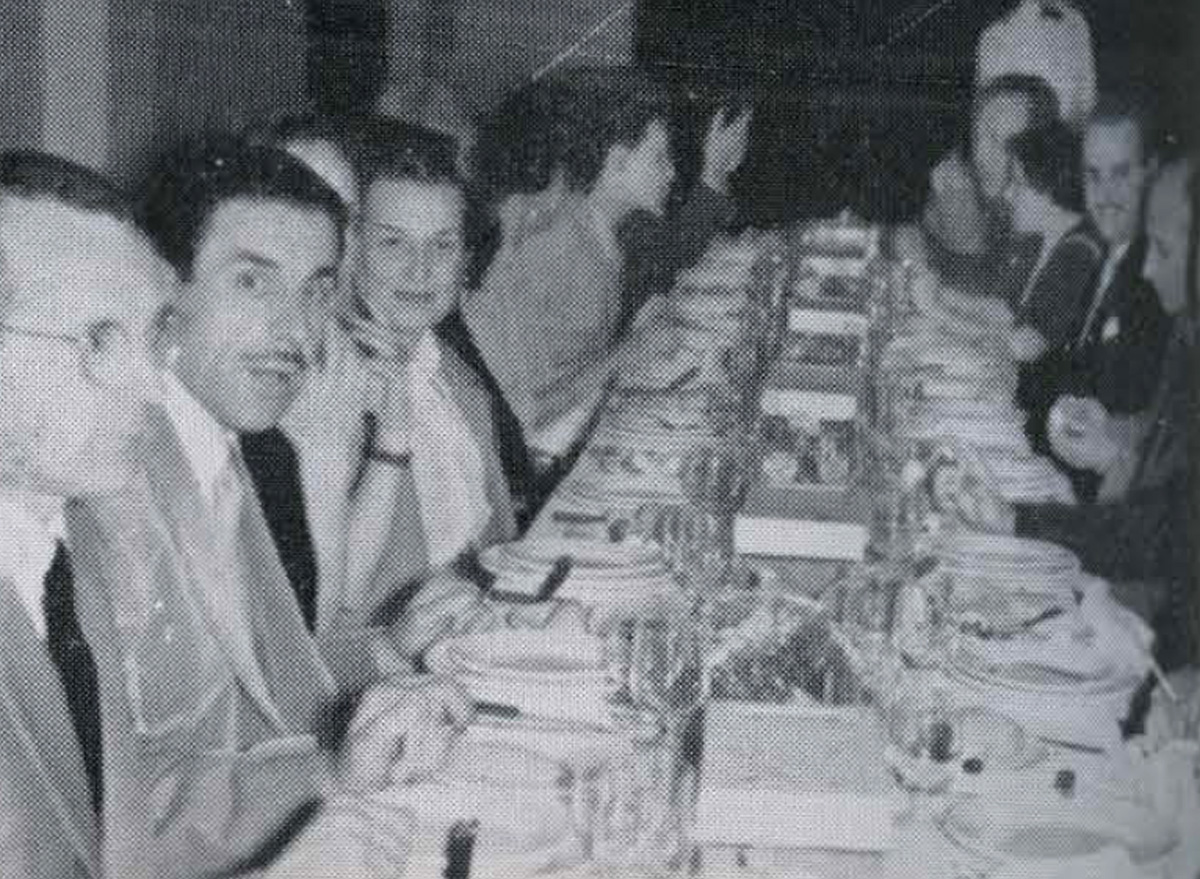Marcel Giró

Exhibitions
XI Salão Arte Fotográfica
Galeria Prestes Maia. 08-09 1952
The annual exhibition of photographic art promoted by the Fotocine Clube Bandeirante is now a tradition. The last one, the eleventh, was held, as usual, at the Prestes Maia Gallery, at the end of September and for most of October, and was a great success.
It should be noted that the number of entries this year was lower than last year and, accordingly, the number of entries was also lower, although this time the judges selected almost 20% (259) of the entries (1435) in black and white, whereas last year they accepted less than 15% of the 2818 entries submitted in black and white.
The number of participating countries was also lower - 28 - compared to last year, when authors from 39 countries entered.
While there was a reduction in quantity, in terms of quality the 11th Salon was perfectly on a par with its predecessor, once again demonstrating the refined selection criteria of the organizers, whose merit in the dissemination of photographic art in Brazil cannot be stressed enough. Even in circles far removed from Camera Art, we noticed a lively interest in the exhibition, and it should be noted that the well-done catalog, when presented by us to friends, never failed to attract them to the halls of the Prestes Maia Gallery.
The exhibition showed a variety of trends, so that the attentive connoisseur could get a general impression of the aesthetic research currently being carried out in the various regions of the globe. In certain countries or in certain photographic clubs, the "subject" predominates, a literary conception of photographic art, the desire to "tell a story" through the image, often through the use of suggestive symbols. Others try to capture and communicate what the Germans call a "Stimmung" - the imponderable atmosphere of the fleeting moment or the mood, so to speak, of the inanimate world; still others, more formalists, devote themselves to purely aesthetic research, looking for perfect abstract compositions, combinations of light and shadow, lines and volumes. Particularly in this field, the results have been magnificent and extremely expressive.
In any case, all the trends seem legitimate to us and each has its raison d'être, but also its specific dangers. The literary tendency easily descends into cheesiness and banality, "Stimmung" hunters often fall victim to cheap sentimentality and "abstractionists" often tend towards easy clichés, repeating a certain curve and composition for the thousandth time, with slight variations in lighting, angle and cut. It is precisely "abstract" art that is more difficult than other genres, as it is the most susceptible to becoming a breeding ground for cabotinism. It also easily invites a certain attitude of levity in the solution of problems, because the artist who remains in the purely abstract, geometric sphere of aestheticism does not have to overcome the anaesthetic weight of the subject, whose resistance to aesthetic treatment often requires an arduous struggle on the part of the author to submit it to the categories of art. In view of the very rigorous selection made by the organizers, it is difficult to mention the names and works that, in our opinion, stand out. In view of the generally high standard of the works, it can only be a matter of personal preference, which is almost always the result of subjective predilections.
We were impressed by the work of Maurício Ruch Almeida (Negrinho, Além da Rêde) and Eduardo Ayrosa (Curvas, Retrato). Galliano Galiera's "Black in White" was interesting, although not perfect. Bohuslav Burian (Czechoslovakia)'s "In Fever" is particularly pleasing, as is S. K. Chan's (Hong Kong) contribution. "The Past" and "Totem", by Oldar Froes da Cruz, reveal a fine talent and "Convergent" by A. Florence is particularly original in its conception, as is "Chapel in Interlagos", by Renato Francesconi. The work of Jorge Fridman (Argentina), "Antes da Partida", is reasonable. By Marcel Giró we admire "Arvore" and "Lama" and, in particular, the beautiful "Impacto" by Roberto de Godoy Moreira, excellent in its conception and execution, in the use of black and white contrasts and in the cutting. The three works by Ann-Marie Gripmann (Sweden), whose baby with the delightful detail of the little bubble on her lips is enchanting, are of delicate sensitivity and technical refinement, although it must be added that in works of this kind it is the subject matter rather than the photographic treatment that is enchanting. Annemarie Heinrich, in her "Portrait of Maria Carmen", perhaps overdid it with the lighting. Kan Hing-Fook's (Hong Kong) collaboration is of noble purity and reveals the aesthetic sensitivity so peculiar to contributions from that part of the globe. Kazuo Kawahara's three works are excellent, including "Sunday Window"; Ed Keffer's "African Dansa" reveals a vigorous camera. Jean Lecocq's contributions ("O N 10") are beautiful, and German Lorca's "Palmas" should be highlighted. "Un Jour de Neige" by M. Desertaux catches the eye among the landscapes, while M. Laert, whose "Neon na Poça" last year revealed a fine talent, also pleases this time with "Balcões" which, in its conception, recalls the "Batalhão Fantasma", which Orlando P. Duarte exhibited last year. A beautiful portrait is "Autoctono", by Elio Rodriguez Marquina (Argentina). James A. Mac Vie (Canada) shines especially with "Lady of the Lak" and likewise Ivan Medar (Yugoslavia), with "Sirossko". Quite literary, but well-crafted, "If I am great only", by Peter Michael Michaelis (Germany). Lowell Miller (United States), whose magnificent "Blue Cristal" we admired at the last exhibition, once again distinguishes himself with his beautiful crystal compositions, with Eigiryo Sato matching him with the three "Tonality" bowls. The Japanese-Brazilian colony contributed plenty of excellent works such as "Lavadeira" by Chosaku Nakajima. "New of Fantasy" and "Hand" by the talented Tanetaka Okada, and "Vision" and "Muse" by Masatoki Otsuka. "A Tarde de Névoa", by José Oiticica Filho, gives us a beautiful "Stimmung" and Angelo F. Nuti's contributions, "De Braços cruzados" and "Reflexos", the latter especially pleasing. Good contributions from Adolf Rossi (Czechoslovakia) - "Whirl of Snowflakes" and "in the Whirl of Dance", as well as "Intermezzo", by Ivo Ferreira da Silva, whose abstract photos are also good. "Régua e Lapis", by José Pires da Silva, is a good composition and as an expression of a beautiful lyrical sensibility, somewhat sentimental, we must mention the collaborations of G. Snoeck (Belgium), with his "Sunshine" and "Avard Stemming". From Belgium came the beautiful "Watching Wings" by J. Borrenbergen. We found "S. O.S.", by Francisco Sobrino (Mexico), and the presence of this tasteless and dull work must be attributed to a nap on the part of the jury. On the other hand, Tsuyoshi Takatori's "Onda" was admirable, as were Sadayoshi Tamura's "Estudo" and "Milhos". In particular, "Study" is masterly, in which the maximum of sobriety is combined with the maximum of wise elaboration, discreet lighting and intelligent cutting, used to make inanimate objects more dynamic through their oblique arrangement. Also noteworthy, more for its subject matter than its execution, is "Casa di Periferia" by Giuseppe Tarsini (Italy). We should point out that Italy is experiencing an epidemic of "High Key" photos, often with a beautiful effect; however, repeated with such insistence, the technique becomes rather monotonous and reveals a craze that has become a cliché. From Hong Kong came the contributions of Daisy Wu, Lay-Fung and Francis Wu, as well as Pun Yet-Pore, among whom there are some of great perfection. Roberto Yoshida's contributions - "Consolação" (Consolation), which has already had another equally witty title, and "Salão de Belas Artes" (Fine Arts Salon) - are delightful and reveal a spirit of subtle irony and fine humor. Roberto Yoshida shone in the last exhibition with his work. "Schlafende Kinder" by Christine Walter (Germany) is a beautiful piece of work, albeit with a somewhat beaten subject; also good is the work by Jack Wright (United States), "Any Port in a Storm".
Some of the best works are not included in the selection, as contributions from the members of the jury. We'd like to mention Francisco Albuquerque's works, particularly "Untitled", which really don't need a title. Jacob Polacow's "Boite" and "Naquele Tempo" are very pleasing; Eduardo Salvatore's "Brise Matinal" is a poem of great beauty, and "Esfôrço" by the same author is also worthy of note.
One of the best pieces in the exhibition was "Desvario" by Aldo A. de Souza Lima, and he also made an impression with "Negro". José V. E. Yalenti's works were perfect, such as "Elevação" and "A Esmo". We didn't have the opportunity to see the "Color" section, certainly a great loss for us, judging by the names in the catalog, which promised a feast for the eyes and the spirit.
All in all, a new, great success for the Foto-cine Clube Bandeirante, whose activity, in extent and intensity, can only be properly appreciated by those who know the great value that should be attributed to photographic art as an educational factor and creative incentive in ever wider circles.
Boletim Foto Cine Clube Bandeirante Nº 078(1952)


